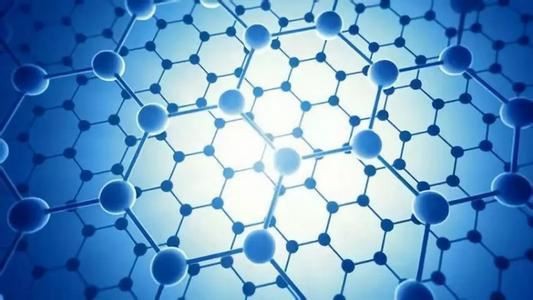- English
- French
- German
- Portuguese
- Spanish
- Russian
- Japanese
- Korean
- Arabic
- Greek
- German
- Turkish
- Italian
- Danish
- Romanian
- Indonesian
- Czech
- Afrikaans
- Swedish
- Polish
- Basque
- Catalan
- Esperanto
- Hindi
- Lao
- Albanian
- Amharic
- Armenian
- Azerbaijani
- Belarusian
- Bengali
- Bosnian
- Bulgarian
- Cebuano
- Chichewa
- Corsican
- Croatian
- Dutch
- Estonian
- Filipino
- Finnish
- Frisian
- Galician
- Georgian
- Gujarati
- Haitian
- Hausa
- Hawaiian
- Hebrew
- Hmong
- Hungarian
- Icelandic
- Igbo
- Javanese
- Kannada
- Kazakh
- Khmer
- Kurdish
- Kyrgyz
- Latin
- Latvian
- Lithuanian
- Luxembou..
- Macedonian
- Malagasy
- Malay
- Malayalam
- Maltese
- Maori
- Marathi
- Mongolian
- Burmese
- Nepali
- Norwegian
- Pashto
- Persian
- Punjabi
- Serbian
- Sesotho
- Sinhala
- Slovak
- Slovenian
- Somali
- Samoan
- Scots Gaelic
- Shona
- Sindhi
- Sundanese
- Swahili
- Tajik
- Tamil
- Telugu
- Thai
- Ukrainian
- Urdu
- Uzbek
- Vietnamese
- Welsh
- Xhosa
- Yiddish
- Yoruba
- Zulu
To Investigate The Growth Of Graphene On The Surface Of Refractory Metals
2024-01-05 18:05:21
To Investigate The Growth Of Graphene On The Surface Of Refractory Metals
Apr 08, 2020
Graphene is the latest member of the carbon material family. With perfect two-dimensional structure, excellent electrical and optical properties, graphene has broad application prospects in semiconductor, photovoltaic, automotive, new energy, aerospace and other fields. Chemical vapor deposition (CVD) is an important method for the growth of two-dimensional materials, which has been developed for more than 10 years. The growth of graphene by CVD has increasingly become the most important method for the preparation of large-area, high-quality single crystal or graphene films.

Large areas of graphene are usually grown by CVD on Cu or Ni catalyst substrates at 1000 °C, but the growth of graphene at higher temperatures has rarely been reported. Recently, the research group of professor guo weiling from Beijing university of technology systematically studied the growth of graphene on refractory metal, that is, metal with extremely high melting point, and gave the growth parameters and characterization results in detail. The basic question of this research is: can high temperature improve the quality of CVD graphene?
First of all, the group is theoretically analyzed that high temperature in graphene CVD method growth is beneficial, because of the high temperature leads to a lower nucleation density, can provide higher energy, strengthen the surface of carbon atoms diffusion and the carbon atoms to overcome the energy barrier and combining to the lattice of metal base, then it is verified by experiment. The research group selected refractory metals tantalum (Ta), rhenium (Re), niobium (Nb), tungsten (W) and molybdenum (Mo) substrates, in which the growth of Nb, W and Mo was similar to that of Ta. Start with Ta (melting point 3017 ℃) as the base, Ar as carrier gas, H2 to protect gas, CH4 or C2H2 as the carbon source growth graphene by CVD method, as shown in figure 1 (a), the surface covered with golden brown Ta carbide, through the figure 1 (b), the material is a mixture of TaC and Ta2C, although the surface of the formed microns thick carbide, but single layer graphene can still grow. Figure 1 (C) shows the graphene after surface transfer of Ta, which is very similar to the monolayer graphene after surface transfer of Cu, indicating that the graphene grown by Ta is also likely to be monolayer. This is because the Ta carbon adsorption is similar to Ni, both can absorb some of the carbon in the heat into the basement, for Ni, the solubility of carbon reducing cooling it with the carbon segregation in the surface of multilayer graphene thereby, and dissolved in the Ta C form stable carbides, the carbon absorption for temperature change is irreversible, so lead to the growth of single-layer graphene. Although the number of graphene layers at 1000 ℃ is relatively uniform, the quality of graphene is poor. In FIG. 1 (d), 2D peak is almost invisible, while the I2D/IG (and ID/IG) ratio of the graphene grown at 3000 ℃ in FIG. 1 (e) is higher (and lower) than that in FIG. 1 (d), so the high temperature improves the quality of graphene. The ratio of Raman atlas is inconsistent with the standard monolayer graphene, which may be because the monolayer graphene growing on Ta substrate is disordered.
Subsequently, the research group studied the refractory metal Re (melting point: 3186 ℃) which did not form carbides. A similar growth scheme was used and the products were transferred to form graphene at 1000 ° c (FIG. 2a) and graphite at 3000 ° c (FIG. 2b), which is significantly different from graphene grown at high temperature on the surface of Ta. So the research of this subject system temperature on Re the growth of the graphene surface, as shown in figure 3, from 1200 ℃ to 1400 ℃ temperature, graphene crystals quality improved, which can be reduced from 1350 cm - 1 D peak, the increasing of 2 D peak and sharpening to prove, but when the temperature is above 1500 ℃, cooled began to become more and more significant effect of carbon segregation, make graphene thickening. Therefore, when other conditions remain unchanged, the optimal growth temperature of graphene on the surface of Re is 1400 ℃.
Finally, the study concluded that, to a certain extent, the high growth temperature is indeed conducive to the growth of graphene, and this change is particularly significant for the metal substrate which is easy to form carbides. However, from the point of view of production cost and product quality, there is still no obvious benefit compared with common copper and nickel, so this study can be regarded as a basic supplement to CVD growing graphene.
YOU MAY LIKE